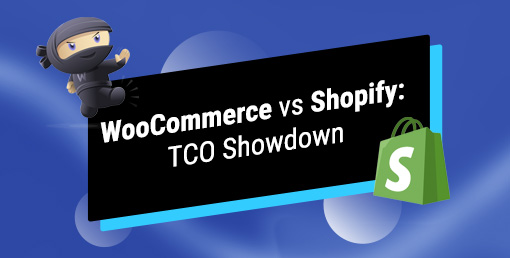


Choosing the right platform is critical when launching a website that grows your business. A good website isn't just a digital billboard — it should actively meet your customers’ needs in ways no other marketing strategy can.
That brings us to the crossroads most people end up at: WooCommerce or Shopify?
Both are giants in e-commerce, but they approach the game differently. Let’s break it down without the noise.
| Feature | WooCommerce | Shopify |
|---|---|---|
| Platform Cost | Free (Plugin only) | From $14 to $179/month |
| Hosting | Self-hosted (Typically $10–$30/month) | Included |
| Theme Design | Thousands of themes (Free/Paid) | 11 official themes (Customizable) |
| Customizability | Full code access | Limited (via apps or Shopify Plus) |
| SEO Tools | Excellent (WordPress based) | Good (Built-in basics) |
| Extensions / Apps | Huge plugin library (Mostly Free/Paid) | App Store (Mostly Paid) |
| Ownership | Full ownership, no vendor lock-in | Vendor lock-in (site removed if unpaid) |
| Ease of Use | Moderate (Requires setup) | Very easy (Out-of-the-box) |
Shopify locks you into its ecosystem. If you stop paying, your site will be gone, and you'll be renting space on their block.
WooCommerce, on the other hand, comes with higher upfront costs but gives you complete control. Your site is yours to build, own, and scale however you like.
Shopify offers sleek, in-house designed themes. You get 11 templates, all mobile responsive, clean, and modern. You can customize colors and layout easily without touching code. The design experience is polished and user-friendly.
WooCommerce runs on WordPress, which means the design is almost limitless. You can pair it with thousands of themes — some free, some premium — and tweak them as much as your developer skills (or budget) allow. It’s a sandbox, not a showroom.
Shopify uses a subscription-based model:
Hosting, security, and payment gateways are included. But those fees can add up over time, and customization is limited unless you pay for extras or apps.
WooCommerce is free, technically. But real performance requires buying extensions and paying for:
The benefit? You only pay for what you need. You’re not locked into features you’ll never use.
Shopify handles basic SEO well. It allows you to edit meta titles and descriptions and create blog content without friction. It’s functional but not outstanding.
WooCommerce leverages WordPress’s blogging power, which is still the gold standard for SEO. With plugins like Yoast or Rank Math, you can fine-tune SEO far beyond what Shopify offers. If content marketing is part of your growth plan, WooCommerce wins here.
Shopify is plug-and-play with selling features. Out of the box, you can:
You can expand with apps from the Shopify App Store, but many come with additional monthly costs.
WooCommerce is all about extensibility. As open-source software, it allows third-party developers to go wild. Want a feature? There’s likely a plugin for it. If not, a developer can build one. You can integrate WooCommerce with almost any tool, API, or platform.
It’s not just about selling but building a system that fits your business like a glove.
Choose Shopify if you want speed, ease, and predictability. It’s a good fit for entrepreneurs who want to launch fast and don’t need complex customizations.
Choose WooCommerce if you want long-term ownership, deeper customization, better SEO, and a platform that grows with you. It’s ideal for serious builders who wish to full control.
Want help deciding or building? Let’s talk. You don’t need to guess your way through this — we’ve built both and know how to make them work for your business.
Let me know if you want this turned into a landing page or broken into social posts.

"*" indicates required fields

"*" indicates required fields

"*" indicates required fields
You must be logged in to post a comment.